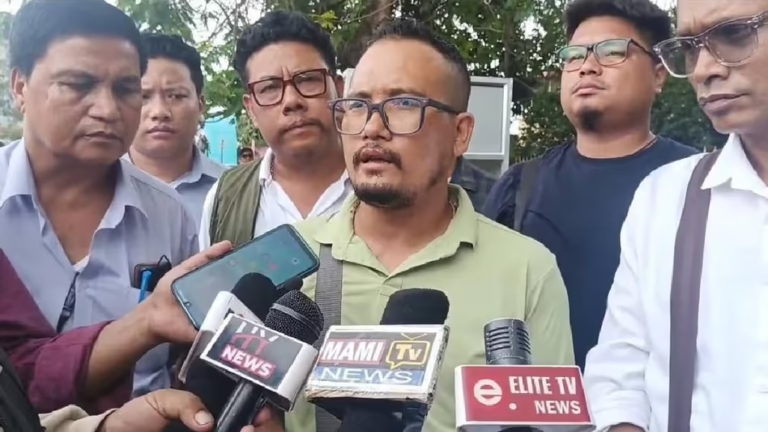Over 50 % of Crimes in Mizoram Linked to Refugees
Summary
Mizoram’s Home Minister K Sapdanga, during a high-level review on June 27, 2025, revealed that over 50% of criminal cases in the state involve refugees—more than 30,000 individuals from Myanmar, Bangladesh, and Manipur—who sought shelter following political and ethnic crises . In response, Chief Minister Lalduhoma has proposed biometric registration and the confiscation of Myanmar-issued IDs for those repeatedly crossing the border . The state is also pushing for police reforms and community-led vigilance through strengthened village defence parties
Introduction
Have you heard the buzz? Mizoram’s Home Minister dropped a bombshell: more than half of the recent crimes in the otherwise tranquil northeastern state have links to refugees and internally displaced people (IDPs). It raises serious questions—not just about crime statistics, but about migration, security, community trust, and human rights. Let’s unpack this pressing issue, step by step.
1. What triggered the refugee inflow?
Picture this: political turmoil and ethnic unrest from neighbouring regions spilling over into India. That’s exactly what’s happening:
- Myanmar (Chin community): The 2021 military coup triggered a mass exodus, with thousands seeking safety in Mizoram.
- Bangladesh (Chittagong Hill Tracts): In 2022, a military crackdown drove Bawm tribe members across the border.
- Manipur (Kuki‑Zo people): After the 2023 ethnic clashes between Kukis and Meiteis, many fled to Mizoram
This influx created a mix of cultures—but also strained infrastructure, resources, and law enforcement.
2. The crime link: what data reveals
Policies aside, what’s the actual breakdown? Sapdanga’s statement points to a worrying trend: over 50% of recent criminal cases are connected to refugee or IDP populations While data isn’t fully transparent, law enforcement suggests a significant number of these crimes stem from individuals crossing illegally or misusing shelter status.
3. New measures: biometric IDs & confiscation
To stem the tide:
- Biometric registration will start in July 2025, gathering fingerprints and other digital data for refugees—including Myanmar nationals—to better monitor their movement
- The confiscation of Myanmar-issued IDs from those who cross the border repeatedly is under consideration, aiming to curb misuse
These are enforcement-heavy steps—but they may spark debates around legality and humanitarian ethics.
4. Community & police reforms
Crime-fighting won’t work without local collaboration. So, the government is:
- Reforming the police force—officers failing to perform may be offered voluntary retirement or special packages
- Strengthening village defence parties—essentially community watch groups—to involve ordinary citizens in keeping law and order
5. Ethnic ties: a double-edged sword
Many refugees—like Myanmar Chin, Bangladesh’s Bawm, and Manipur’s Kuki-Hmar-Zomi—share ethnic and cultural bonds with Mizoram locals. While this fosters empathy and integration, it also complicates enforcement. Community solidarity may shield perpetrators—but cultural affinity can also be a platform for positive engagement.
6. Navigating humanitarian and security concerns
Let’s balance the scales:
- Security concerns: unchecked entry, ID misuse, and rising crime.
- Humanitarian needs: refugees fleeing violence deserve safety and legal protection.
Can Mizoram strike a balance between compliance and compassion? Biometric systems might help, but without judicial oversight, they could alienate the very people who need protection.
7. What comes next? Legal & policy outlook
As July approaches:
- Refugee registration begins.
- Biometric systems roll out.
- ID confiscation policies are debated.
- Civil society and legal experts will likely demand transparent guidelines, due process, and judicial oversight.
The big question: Will these steps curb crime without violating refugee rights?
Frequently Asked Questions
- Why did Mizoram see so many refugee-linked crimes?
Crime may rise due to undocumented migration, lack of systems to monitor arrivals, and desperation among displaced people. - Are all Myanmar refugees criminals?
Absolutely not. Many are law-abiding and culturally integrated; measures target a small subset misusing systems. - Is biometric registration legal?
Future announcements indicate it’s planned—but must comply with Indian laws and safeguard privacy rights. - Could ID confiscation be challenged legally?
Yes. Refugees with valid humanitarian claims may have judicial grounds to contest ID removal. - How can civilians support public safety?
By joining village defence parties, reporting suspicious activity, and fostering community dialogue.


